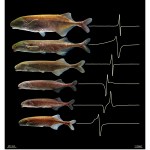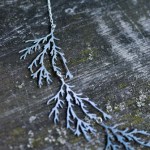nervous system
The Michigan Physiological Society, a chapter of the American Physiological Society, held their 3rd annual meeting last week. As mentioned in a prior post, the keynote address was given by Comparative Physiologist Dr. Hannah Carey (University of Wisconsin School of Veterinary Medicine). You can read about her research in the prior post.
Here are other highlights from the meeting:
Seminars:
Photo of crayfish by "Krebse in Österreich", own work, CC BY 2.0, https://commons.wikimedia.org/w/index.php?curid=858592
...or as I prefer to view them:
Image of crayfish dinner By Игоревич (Own…
Animals serve as useful models in medical research—but they also serve as models for our anthropocentric fantasies. On Life Lines, Dr. Dolittle reports that researchers were able to "restore locomotion in paralyzed rats using a combination of nerve stimulation and engaging the mind by having the rats complete simple tasks." The rats, outfitted with a "support jacket" to provide external stimulation, learned to walk and even sprint to their favorite snack. Dr. Dolittle writes "the nerves had actually reorganized to create new connections around the injury site" and "these new research findings…
The 10 winning images from the inaugural Bio-Art competition hosted by the Federation of American Societies for Experimental Biology (FASEB) were announced last week. Here are my favorites:
Closely related species of electric fish with recordings of their electric organ discharge. This organ is used for communication and prey location, similar to echolocation used by bats. Note how the pattern differs between species. Submitted by Matthew E. Arnegard (Fred Hutchinson Cancer Research Center, Seattle, WA), Derrick J. Zwickl (University of Kansas, Lawrence) as well as Ying Lu…
THE human brain is a true marvel of nature. This jelly-like 1.5kg mass inside our skulls, containing hundreds of billions of cells which between them form something like a quadrillion connections, is responsible for our every action, emotion and thought.
How did this remarkable and extraordinarily complex structure evolve? This question poses a huge challenge to researchers; brain evolution surely involved thousands of discrete, incremental steps, which occurred in the mists of deep time across hundreds of millions of years, and which we are unlikely to ever fully understand.
Nevertheless,…
Algae filament necklace
Pam at Phantasmaphile alerted me to Nervous System, a jewelry company founded by MIT grads Jessica Rosenkrantz and Jesse Louis-Rosenberg. Nervous System "creates experimental jewelry, combining nontraditional materials like silicone rubber and stainless steel with rapid prototyping methods. We find inspiration in complex patterns generated by computation and nature."
While their various lines don't look quite as I expected - I was anticipating something Haeckel-like for "radiolaria" and neuronal for "dendrite" - they are intriguing and definitely "feel" organic.…

